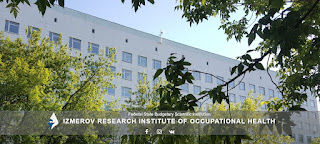Protocollo di misurazione della esposizione da 5G: ci vuole una laurea !
La popolazione generale è esposta ai campi elettromagnetici a radiofrequenza (RF-EMF) utilizzati dalle reti di telecomunicazione. Studi precedenti hanno sviluppato metodi per valutare questa esposizione.
Questi metodi saranno inadeguati per valutare accuratamente l'esposizione nelle tecnologie 5G o altre tecnologie wireless che utilizzano antenne adattive. Ciò è dovuto al fatto che le stazioni base 5G NR (nuova radio) si concentreranno attivamente sugli utenti connessi, con conseguenti elevate variazioni spazio-temporali nei RF-EMF. Questo aumenta l'incertezza nelle misurazioni personali dell'esposizione RF-EMF. Inoltre, l'esposizione di un utente dalle stazioni base dipenderà dalla quantità di utilizzo dei dati, aggiungendo una nuova componente all'esposizione auto-indotta, che è spesso omessa negli studi attuali.
... un ricercatore addestrato esegue misurazioni in microambienti predefiniti con un dispositivo mobile dotato del sensore RF-EMF. Il dispositivo mobile è programmato per ripetere una sequenza di scenari di trasmissione dati (diverse quantità di trasmissioni dati uplink e downlink).
Sulla base di simulazioni, è possibile valutare la quantità di esposizione indotta nel corpo quando il dispositivo utente si trova in una certa posizione rispetto al corpo.
Protocol for personal RF-EMF exposure measurement studies in 5th generation telecommunication networks
Maarten Velghe, Sam Aerts, Luc Martens, Wout Joseph, Arno Thielens. Protocol for personal RF-EMF exposure measurement studies in 5th generation telecommunication networks. Environ Health. 2021 Apr 1;20(1):36. doi: 10.1186/s12940-021-00719-w.
Abstract
Background: The general population is exposed to Radio-Frequency Electromagnetic Fields (RF-EMFs) used by telecommunication networks. Previous studies developed methods to assess this exposure. These methods will be inadequate to accurately assess exposure in 5G technologies or other wireless technologies using adaptive antennas. This is due to the fact that 5G NR (new radio) base stations will focus actively on connected users, resulting in a high spatio-temporal variations in the RF-EMFs. This increases the measurement uncertainty in personal measurements of RF-EMF exposure. Furthermore, a user's exposure from base stations will be dependent on the amount of data usage, adding a new component to the auto-induced exposure, which is often omitted in current studies.
Goals: The objective of this paper is to develop a general study protocol for future personal RF-EMF exposure research adapted to 5G technologies. This protocol will include the assessment of auto-induced exposure of both a user's own devices and the networks' base stations.
Method: This study draws from lessons learned from previous RF-EMF exposure research and current knowledge on 5G technologies, including studies simulating 5G NR base stations and measurements around 5G NR test sites.
Results: To account for auto-induced exposure, an activity-based approach is introduced. In survey studies, an RF-EMF sensor is fixed on the participants' mobile device(s). Based on the measured power density, GPS data and movement and proximity sensors, different activities can be clustered and the exposure during each activity is evaluated. In microenvironmental measurements, a trained researcher performs measurements in predefined microenvironments with a mobile device equipped with the RF-EMF sensor. The mobile device is programmed to repeat a sequence of data transmission scenarios (different amounts of uplink and downlink data transmissions). Based on simulations, the amount of exposure induced in the body when the user device is at a certain location relative to the body, can be evaluated.
Conclusion: Our protocol addresses the main challenges to personal exposure measurement introduced by 5G NR. A systematic method to evaluate a user's auto-induced exposure is introduced.
https://pubmed.ncbi.nlm.nih.gov/33794922/
https://ehjournal.biomedcentral.com/articles/10.1186/s12940-021-00719-w



Commenti
Posta un commento